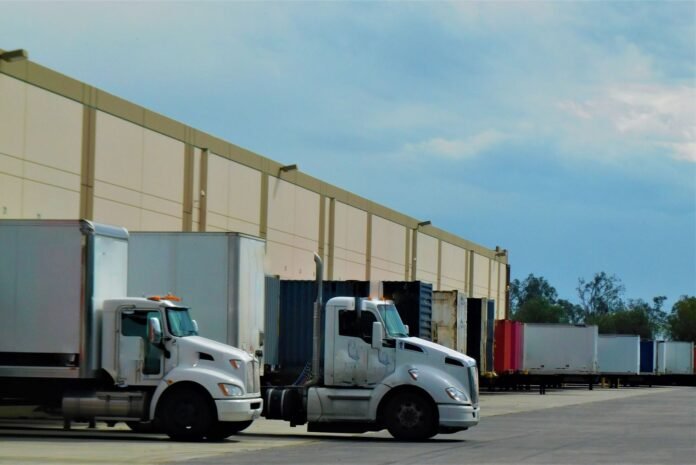In the ever-evolving landscape of supply chain management, the role of warehousing has become increasingly pivotal. Traditional warehousing methods are giving way to advanced techniques that not only streamline operations but also enhance overall efficiency. This article delves into the world of advanced warehousing techniques, exploring how they go beyond the conventional and revolutionize the way goods are stored, managed, and shipped.
I. The Evolution of Warehousing Solutions
Table of Contents
1.1 Traditional Warehousing Challenges
Traditional warehousing faced several challenges, including limited space utilization, inefficient inventory tracking, and time-consuming order fulfillment processes. As businesses grappled with these issues, the need for more sophisticated warehousing solutions became evident.
1.2 Rise of Advanced Warehousing Techniques
The advent of technology has ushered in a new era for warehousing. Advanced techniques leverage cutting-edge technologies like automation, artificial intelligence (AI), and the Internet of Things (IoT) to address the shortcomings of traditional methods. These innovations pave the way for more efficient, agile, and responsive supply chains.
II. Automation: A Game-Changer in Warehousing
2.1 Robotic Warehouse Systems
One of the most notable advancements in warehousing is the integration of robotic systems. Automated guided vehicles (AGVs) and robotic arms streamline the movement and retrieval of goods, reducing the reliance on manual labor. This not only enhances speed but also minimizes the risk of errors in handling.
2.2 Automated Storage and Retrieval Systems (AS/RS)
AS/RS systems are a cornerstone of advanced warehousing. These systems use robotic technology to efficiently store and retrieve goods from high-density racks. By optimizing vertical space, AS/RS ensures maximum storage capacity and facilitates quick access to items, thereby accelerating order fulfillment.
III. Intelligent Inventory Management
3.1 RFID Technology
Radio-frequency identification (RFID) technology has transformed inventory management by providing real-time visibility into the movement of goods. RFID tags enable accurate tracking of items throughout the supply chain, reducing the likelihood of errors and enhancing inventory accuracy.
3.2 Machine Learning for Demand Forecasting
Machine learning algorithms analyze historical data, customer behavior, and market trends to make accurate demand forecasts. By predicting demand patterns, businesses can optimize their inventory levels, reduce carrying costs, and ensure timely replenishment of stock.
IV. IoT Integration for Real-Time Monitoring
4.1 Smart Sensors
The Internet of Things (IoT) plays a crucial role in advanced warehousing through the integration of smart sensors. These sensors monitor environmental conditions, such as temperature and humidity, ensuring that goods are stored in optimal conditions. Real-time data enables proactive management, preventing potential issues before they impact the quality of the products.
4.2 Connectivity for Enhanced Visibility
IoT devices create a network of interconnected devices within the warehouse. This connectivity provides end-to-end visibility, allowing stakeholders to track the movement of goods, monitor equipment performance, and identify bottlenecks in the supply chain. The result is a more transparent and responsive warehousing system.
V. Warehousing Solutions: Adapting to E-Commerce Boom
5.1 Order Fulfillment Optimization
As e-commerce continues to reshape consumer behavior, warehousing solutions must adapt to the demands of online retail. Advanced systems prioritize order fulfillment efficiency, employing technologies like order picking robots and automated sorting systems to expedite the processing of online orders.
5.2 Integration with Last-Mile Delivery
The final frontier in e-commerce logistics is the last mile. Advanced warehousing techniques seamlessly integrate with last-mile delivery solutions, ensuring that goods reach customers swiftly and with precision. This integration is crucial for meeting customer expectations in the era of fast-paced online shopping.
VI. Conclusion
In conclusion, the evolution of warehousing goes far beyond the traditional image of shelves stacked with goods. Advanced warehousing techniques, driven by automation, intelligent inventory management, and IoT integration, have redefined the way businesses handle their supply chains. As the industry continues to embrace innovation, the term “warehousing solutions” encapsulates a broad spectrum of technologies that propel logistics into a future of unprecedented efficiency and responsiveness.
VII. Continuous Improvement through Data Analytics
The integration of advanced warehousing techniques brings forth a wealth of data generated at various points in the supply chain. Leveraging data analytics tools allows businesses to gain insights into operational efficiency, identify areas for improvement, and make informed strategic decisions. Continuous analysis of data helps refine processes, optimize resource allocation, and ultimately contributes to the ongoing evolution of warehousing practices.
VIII. Flexibility and Scalability for Changing Demands
One of the key advantages of advanced warehousing solutions is their inherent flexibility and scalability. Businesses operating in dynamic markets or experiencing seasonal fluctuations can adjust their warehousing operations to meet changing demands. Automation and intelligent systems enable quick reconfiguration of workflows, ensuring that the warehouse adapts seamlessly to evolving market conditions, thereby enhancing overall supply chain resilience.


